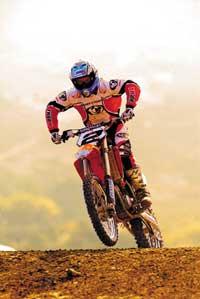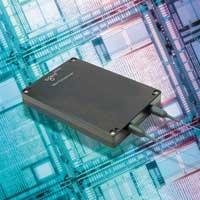New more detailed information system of sports results
2003/07/01 Atxotegi Alegria, Uhaina - Elhuyar Zientziaren Komunikazioa Iturria: Elhuyar aldizkaria

However, this system has caused problems on several occasions: the subjectivity of the judge, the lack of precision in the times... In addition, in order to bring more public to sporting events and make them more attractive, the media should offer their performances with real-time ratings and scores. On the other hand, all results and detailed event information should be available online. To address
all these problems, the Association of the Telecommunications Cluster of the Basque Country Gaia, in collaboration with the Basque Government and the University of the Basque Country, presented the k-Speed/Kiroltek project. This system allows you to measure time, tap and present results in real time. It is based on portable devices such as laptops, wireless local radio frequency network technologies and Internet applications. It allows you to calculate the score in sports events, perform rankings and give results in real time.
K-Speed/Kiroltek is a system of competitions that are organized in large areas (fields, rivers, seas, stadiums or sports). In them, it is often necessary to score more than one exercise simultaneously and take into account total and partial times.
Basic elements of the system
k-Speed/Kiroltek radio frequency system (RFID: It allows to identify each participant through Radio Frequency Identification, informing of the duration of the tour to date when passing through a certain place.
The RFID automatic identification system is similar to that of barcodes. They have the same application, the only thing that changes is: The RFID system uses the radio frequency signal instead of the optical signal.

Barcodes use a reader and labels. The RFID system uses a reader and a special card (Transponder). A laser beam reflection is used to read barcode labels, while the RFID system uses a low power radio frequency signal.
The RFID system consists of a Transponder device with an identification code, a reader and an RFID device that allows the emission of radio frequency signals, a radio frequency module and a digital reader or module.
In addition to the RFID system, each judge has a handheld computer to receive and control all the necessary information.
Advantages of the system
By presenting the results in real time, the show tends to have more vitality and realism. This way the gaps are avoided and the spectators, present at the event and those who are watching directly through the media, have the opportunity to live the event with greater intensity.
On the other hand, in the tests of athletes who practice one after another, all of them (judges, spectators, journalists, athletes...) have the opportunity to immediately collect the results of all participants. In this way, athletes can be aware of the results of their competitors who have acted previously and this information can be very useful before competing.

The publication of the results is of general interest: the audience attending the contest will be able to see them in giant electronic markers, the media will be able to connect to the internal network and offer instant information to their viewers and, finally, the data can be sent to a website prepared by the organization. This way, tracking the results of the contest can be done directly from anywhere in the world.
In addition, SMS messaging systems can be connected so that people interested in the competition receive information at the time of the competition. Finally, this system can be connected to television, so that all the results and classification will be exposed also in the television networks that are announcing the event.
k-Speed/Kiroltek analyzes Gernika's Moto Enduro race
In Gernika an important Moto Enduro race was held in early March and was used by researchers to test the operation of the k-Speed/Kiroltek system and correct errors. The
main feature of this sport is regularity, not speed. Along the route the riders have to go through some specific points, which if they spend too late penalize them, but also from soon. To perform the
test, several antennas were installed on the route that activate the Transponder. The antenna converts the received signal into digital and sends the information to a central server. This central server is connected to a website and anyone who has not been able to attend the race can consult all the time at the same time. This technology allows the final result to be calculated automatically instead of manually.
www.ihobe.net

Gai honi buruzko eduki gehiago
Elhuyarrek garatutako teknologia



